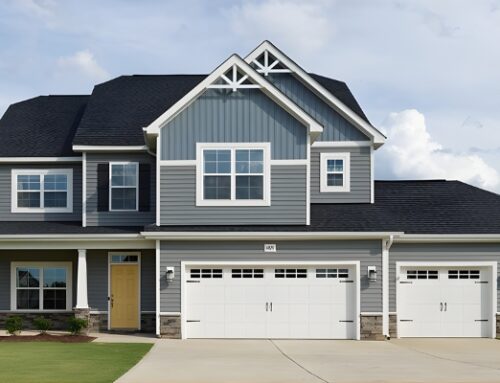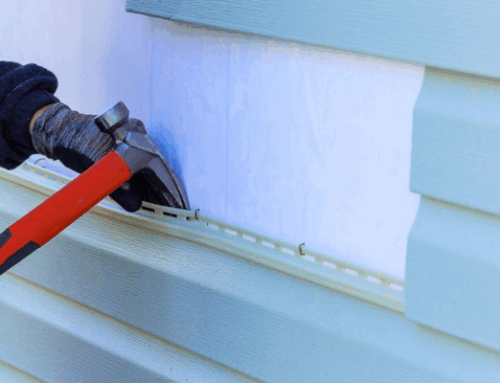When selecting the best color and design for your new siding, it is not just about beauty, but it is an investment in the future worth and beauty of your house. The right siding adds to the curb appeal, displays architectural integrity, and gives aesthetic harmony. Decisions made carefully can not only help increase your individual taste but can also add a lot of value in the area of resale and long-term satisfaction of a homeowner.
How to Select the Best Color and Style for Your New Siding
Choosing the most appropriate siding color and style not only means the eventual curb appeal but also means that flow between the architecture of your home, your surrounding environment, and your hobby interest.
1. Know Your Home’s Architectural Style
In selecting colors and profiles, the architectural style of your residence must be given initial consideration. Various design varieties go well together with certain colors and surfaces. Craftsman homes are compatible with dull greens, warm earthy browns, or clouds of red that bring out natural materials and craft work.
Urban residence welcomes bold colors like charcoal siding and vibrant white accents or deep blue and metallic decorations. Farmhouses can never go out of style, whether it is crisp white, soft gray, or taupe, which elicits their modest rustic beauty. Use of a siding style that harmonizes with the architectural style of your house will be befitting since it works out to be timeless and unified.
2. Consider Current Features
Your siding color must complement permanent outside elements like the roof, window trim, stonework, and landscaping. A warm brown roof, for example, will be horrid with cool gray siding but handsome with beige or olive.
Consider how white or black trim outlines and enhances your siding and how stone details affect your color scheme.
3. Use the 60–30–10 Color Theory
Apply a single base siding color to about 60 percent of the exterior, a second color to 30 percent, and a strong or contrasting color to 10 percent of decorative features, including doors, trim, or ornamentation.
Also, you can use warm beige as your main siding, soft brown board-and-batten as trim, and deep red as the front doors to give it some personality. To create texture, mix materials like stone veneer or fiber-cement paneling in this proportion. This provides a balanced appearance with depth and dimension, as opposed to a too busy appearance.
4. Pick Colors Based on Your Climate and Neighborhood
The colors are influenced greatly by your local climate. When it is sunny, the colors tend to appear light and shiny, and middle tones tend to seem washed out. Softer pastels, including light grays, creams, or pastels, bring warmth and brightness in overcast regions or even in the snowy areas.
Neighborhood aesthetics are also to be respected. You must be an individual, but you must be in a palette that suits the surrounding houses so that you do not shock the neighbors, particularly when you live in a homeowner association. Your goal should be to find a balance between individuality and the external harmony of the environment.
5. Research Popular Color Palettes and Trends
Knowing about the popular colors in siding is one of the methods of modernizing your house without shunning the options that have not weathered with age. Among trendy 2025 colors are: warm neutral colors such as clay and sandstone, grounded colors such as olive and terracotta, and deep colors such as navy, charcoal, and forest green. These have a contemporary yet classic charm.
Although trendy colors like bright yellow or too-bright reds are stimulating, they will quickly go out of style and harm resale value. Alternatively, select tones that possess lasting versatility, which will suit your architecture and environment. Blending a trend-inspired accent with a classic base hue is a crisp, secure compromise.
6. Select Your Siding Material and Style
Choosing the material used will decide the look and life of your siding, in addition to the color. Vinyl siding can be customized easily, making it cheap and suitable in the case of traditional designs. Fiber-cement offers the appearance of wood but with better fire and insect resistance, so it is good to look at Craftsman or contemporary homes.
Wood-grain siding adds the true character, yet additional maintenance is needed. The metal siding is ideal in the ultra-modern design with industrial flair, whereas stone or brick veneers provide rugged durability
7. Visualize and Test Samples
Visualization technology may help you in previewing the siding options you want to use before making a decision. There are many online tools that you can use to experiment with features such as dragging photos into the tool or choosing home styles to explore combinations of color and material.
After you have narrowed your choices, buy actual swatches of materials or install small samples. Observe them in the morning, in the afternoon, in good weather, and in bad, and learn how they will appear in natural light. By trying to set your choices in context, it will enable you to make a sure and sound decision.
Expert Tips to Ensure You Do Not Make Mistakes
- Compare siding and trim
- Ensure your trim and siding harmonize with one another in contrast
- Restrict palette to three colors per neighborhood and architectural context
- Follow a three-color rule: main siding, trim, and accent
- Evaluate age and fade ability
- Choose siding color with UV protection.
Conclusion
Design, durability, and long-term value are combined when selecting the correct color and style of siding. Considering the building structure, environment, and materials of your home, you can come across a harmony in the appearance that will last long.
To get expert opinion and professional siding installation and cabinets, contact Born Carpentry today, your reliable expert in creating curb appeal and long-term preservation of your house.






